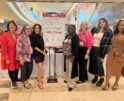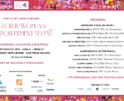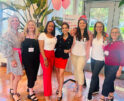
Nancy Lublin: CEO, Do Something

By Caroline Cox
Do Something boasts that it’s “one of the largest organizations in the U.S. for teens and social change.” They inspire teens to change the world through volunteering, awareness-raising projects and national campaigns. Do Something uses outlets like social media and pop culture tie-ins to attract members. They have the largest database of teen volunteer opportunities in the U.S. with more than a million youths involved. Last year, they reached more than $8 million in total revenue.
Lublin fell in love with nonprofit work after inheriting $5,000 in 1995. She created Dress for Success, which provides donated suits and career development for women around the world. In 2003, she took over as CEO of Do Something. Lublin is also an author, columnist for Fast Company and has won numerous awards and accolades for her philanthropic efforts.
PINK: What inspired you to start your organization and whom does it benefit?
Nancy Lublin: I love teenagers – they are creative, hopeful, fast and bold. We run large-scale campaigns that deliver meaningful offline impact. For example, we had more than 200,000 kids green their schools for our February campaign last year. We are almost entirely corporate funded.
PINK: What methods of outreach do you use?
NL: We work with companies that love teens, like Aeropostale and Staples. I personally manage our Twitter account. We’re the fifth-largest charity on Twitter, with nearly 500,000 followers. Through social media we’re able to have an open and transparent conversation with teens who [participate] in our campaigns. We also leverage communications technologies like mobile SMS, Facebook and partnerships with companies like FastWeb, Alloy and Hulu.
PINK: What has been your proudest moment?
NL: Tackle Hunger, sponsored by the Walmart Foundation, was one of our most successful campaigns. We had more than 1,000 schools across the country participate. They collected more than 1.3 million pounds of food for hungry families this past holiday season. Another is when I saw my team high-fiving each other and hugging. Two developers had decided to send a test message by text to 500 kids we had not heard from in ages. They got a 20 percent response rate in nine minutes. What I loved most was that I didn’t even know it was happening. I’m fiercely proud of that culture.
Recommended
-
Fall 2024 EventNovember 19th, 2024
-
REGISTER HERE FOR THE UPCOMING...September 19th, 2024
-
Spring Sales Are Ready To Bloo...March 1st, 2024
-
Two Months Away!August 24th, 2023
-
Pink’s Signature Spring ...May 17th, 2023















